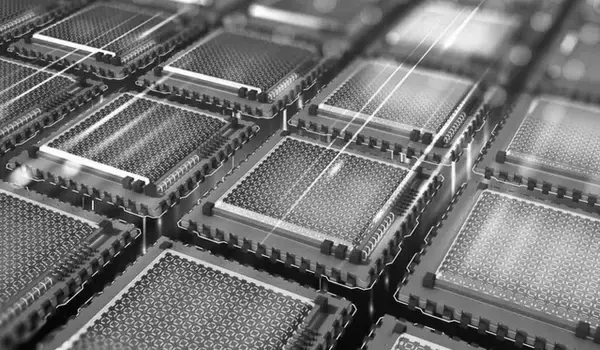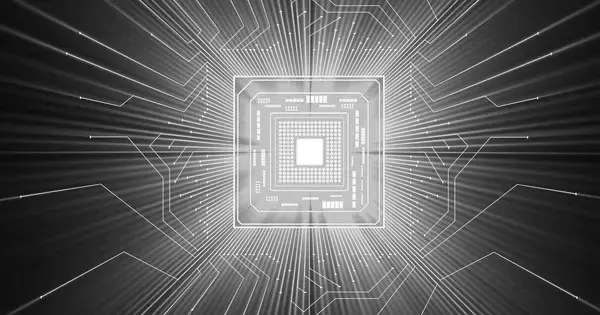Delft University of Technology researchers have successfully teleported quantum information across a rudimentary network. This is the first of its kind, and it represents an important step toward a future quantum Internet. This breakthrough was made possible by vastly improved quantum memory and the improved quality of the quantum links connecting the network’s three nodes. The QuTech researchers, a collaboration between Delft University of Technology and the Netherlands Organisation for Applied Scientific Research (TNO), published their findings in the scientific journal Nature.
The ability to send quantum information (quantum bits) between network nodes is what gives a future quantum Internet its power. This will enable a wide range of applications, including securely sharing confidential information, connecting multiple quantum computers to increase computing capacity, and the use of highly precise, linked quantum sensors.
Sending quantum information
The nodes of such a quantum network are made up of small quantum processors. It is not easy to send quantum information between these processors. One possibility is to send quantum bits using light particles, but due to the inevitable losses in glass fiber cables, especially over long distances, the light particles will almost certainly not reach their destination. Because it is fundamentally impossible to simply copy quantum bits, the loss of a light particle means that the quantum information is irreversibly lost.
Researchers have successfully teleported quantum information across a rudimentary network. This is the first of its kind, and it represents an important step toward a future quantum Internet. This breakthrough was made possible by vastly improved quantum memory and the improved quality of the quantum links connecting the network’s three nodes.
Teleportation is a more efficient way of transmitting quantum information. The name of the protocol for quantum teleportation comes from similarities with teleportation in science-fiction films: the quantum bit disappears on the sender’s side and reappears on the receiver’s side. Because the quantum bit does not have to travel across the intervening space, it cannot be lost. As a result, quantum teleportation will be an important technique for a future quantum Internet.
Good control over the system
A quantum entangled link between the sender and receiver, a reliable method for reading out quantum processors, and the ability to temporarily store quantum bits are all required to teleport quantum bits. Previous QuTech research demonstrated the ability to teleport quantum bits between two adjacent nodes. QuTech researchers have now demonstrated for the first time that they can meet the package of requirements and demonstrate teleportation between non-adjacent nodes, i.e. over a network. They used an intermediate node called “Bob” to teleport quantum bits from node “Charlie” to node “Alice.”

Teleporting in three steps
There are three steps to teleportation. To begin, the “teleporter” must be prepared, which requires Alice and Charlie to become entangled. Although Alice and Charlie have no physical connection, they are both directly connected to Bob. Alice and Bob accomplish this by establishing an entangled state between their processors. Bob then records his portion of the entangled state. Bob then enters an entangled state with Charlie. A quantum mechanical “sleight of hand” is then performed: Bob sends the entanglement on as it were by performing a special measurement in his processor. As a result, Alice and Charlie have become entangled, and the teleporter is ready for use!
The second step is to create the “message” – the quantum bit – that will be teleported. This could be a ‘1’ or a ‘0,’ or any of a number of other intermediate quantum values. Charlie is in charge of preparing this quantum information. To demonstrate that the teleportation works in general, the researchers repeated the entire experiment with different quantum bit values.
The third step is for Charlie to teleport to Alice. Charlie performs a joint measurement with the message on his quantum processor and on his half of the entangled state for this purpose (Alice has the other half). What happens next is something only possible in the quantum world: as a result of this measurement, the information vanishes on Charlie’s side and reappears on Alice’s side.
You might believe that everything is finished at that point, but nothing could be further from the truth. The quantum bit was encrypted during transfer, and the key is determined by Charlie’s measurement result. As a result, Charlie sends the measurement result to Alice, who then performs the relevant quantum operation to decrypt the quantum bit. For example, a “bit flip” converts 0 to 1 and 1 to 0. The quantum information is now ready for use after Alice has completed the correct operation. The teleportation has worked!
Teleporting several times
Reversing steps one and two of the teleportation protocol will be the focus of future research. This entails first generating (or receiving) the quantum bit to be teleported, and then preparing the teleporter for the teleportation. Reversing the order is especially difficult because the quantum information to be teleported must be stored while the entanglement is formed. It does, however, have a significant advantage in that the teleportation can then be performed entirely “on request.” This is significant, for example, if the quantum information contains the result of a difficult calculation or if teleportation must be performed several times. This type of teleportation will thus serve as the backbone of the quantum Internet in the long run.





